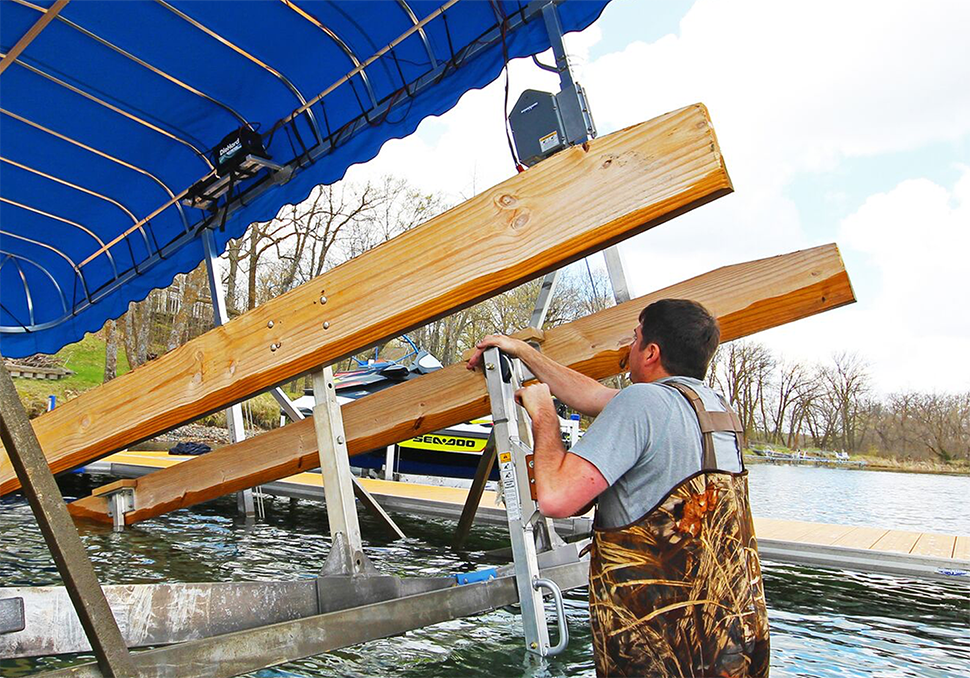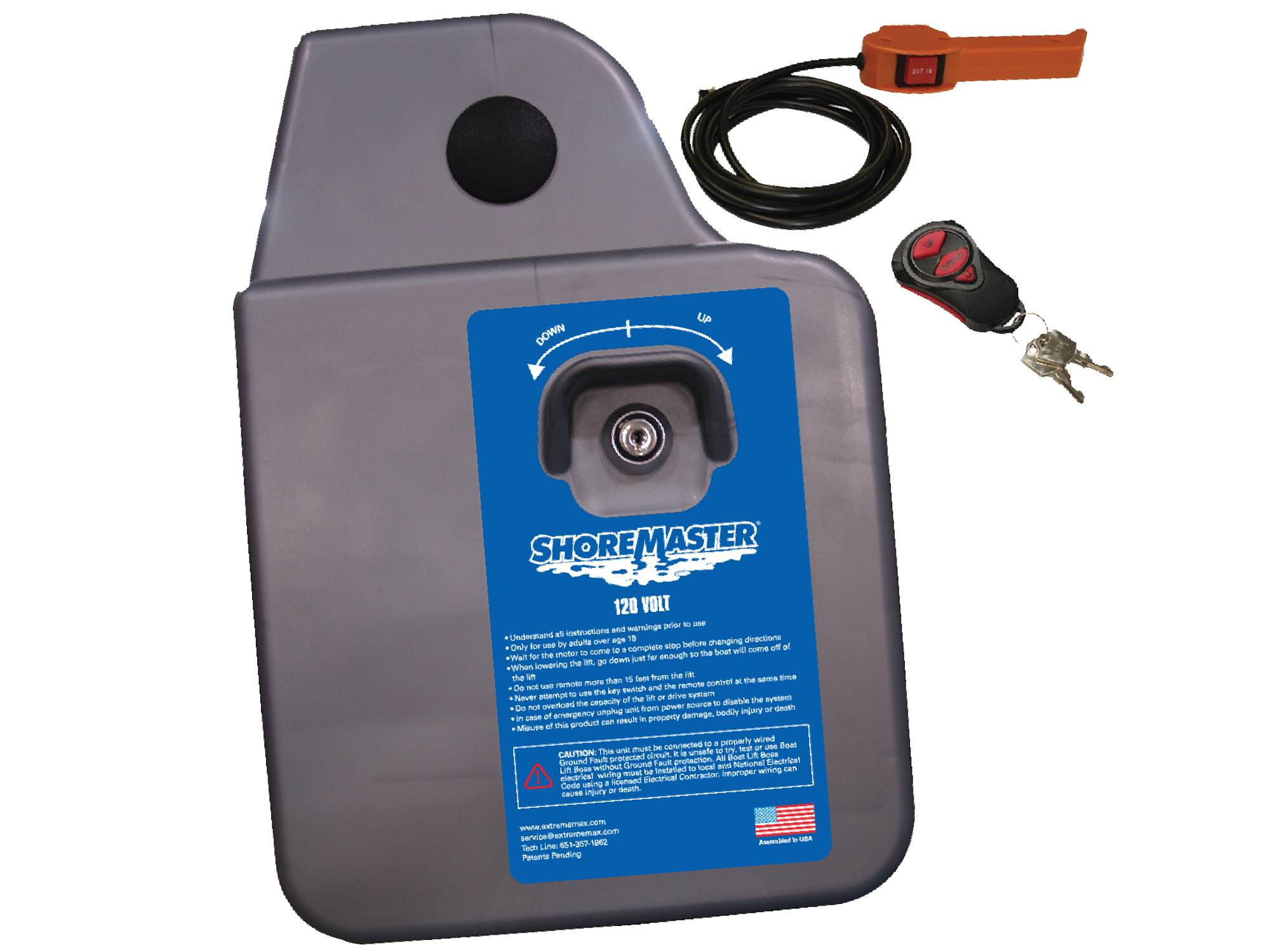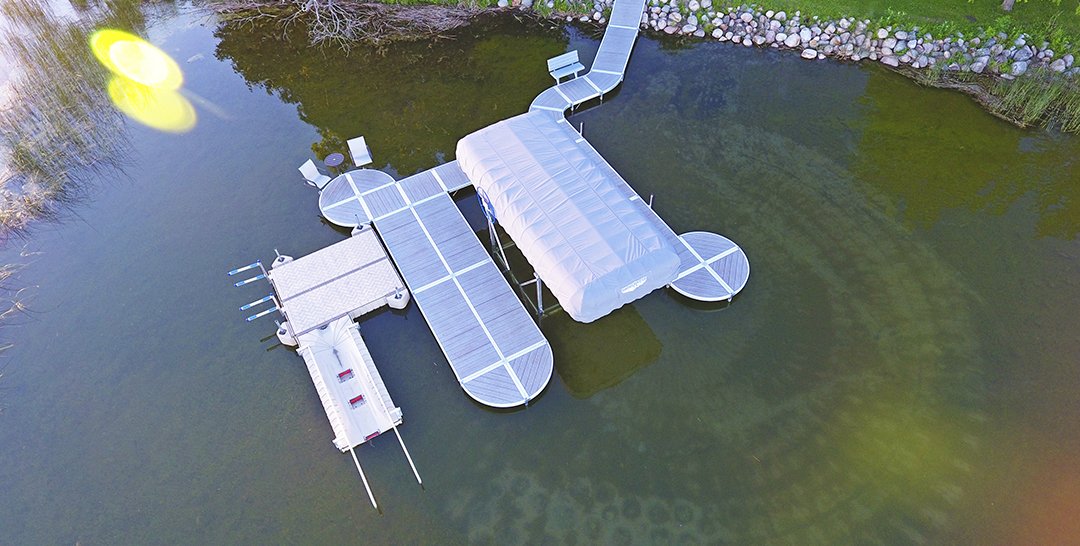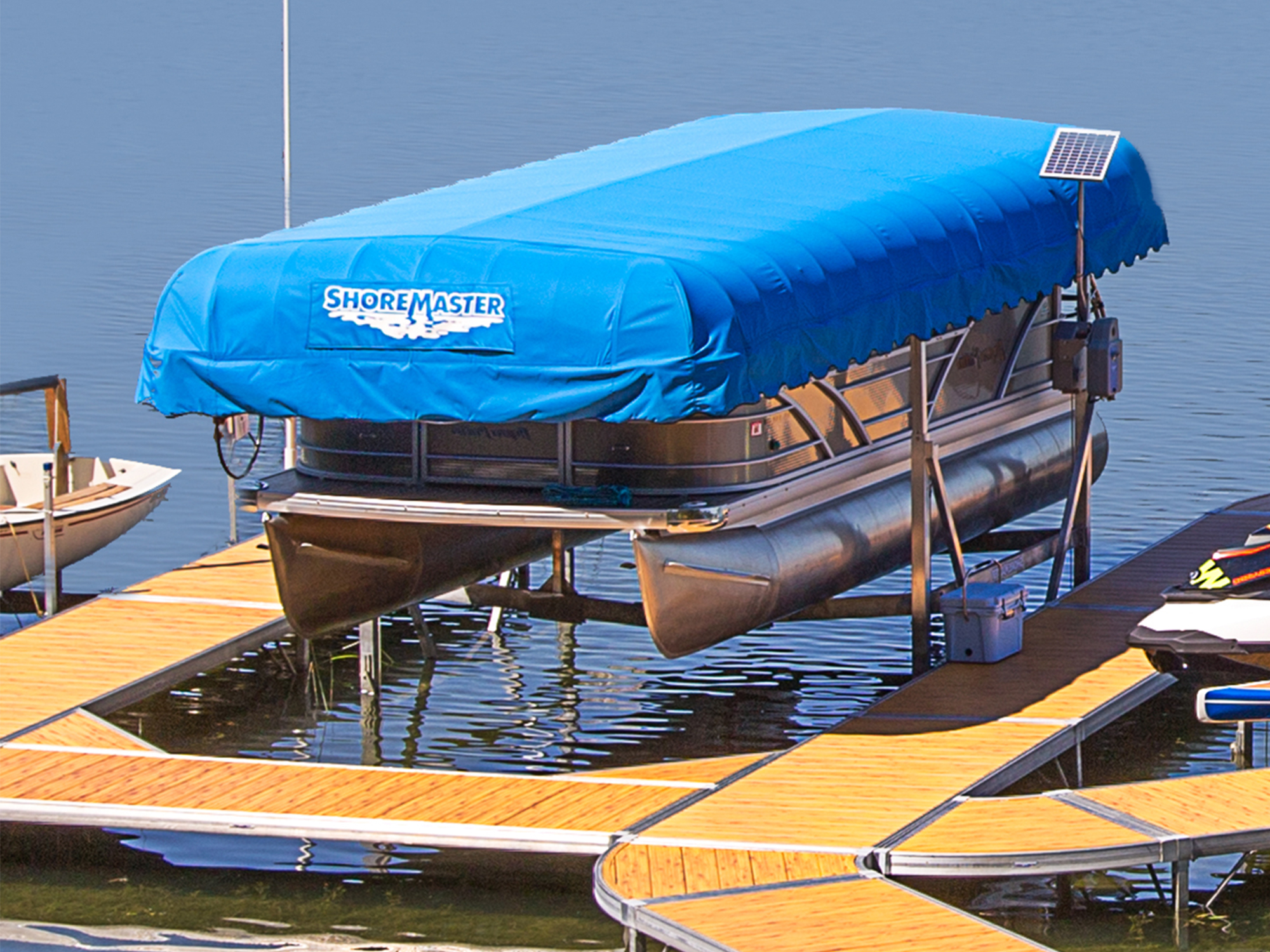Posted on August 27, 2020
Boat Lift Installation: What to Consider Before Installing a Boat Lift
Written by ShoreMaster Marketing
Boat lift installation is one of the best choices that you can make for your watercraft. A good boat lift will protect your boat from waves, other boats, your dock, and even the water itself. Your boat lift will make it easier to keep your boat clean as well, and with a boat lift canopy you can keep it safe from the weather and other debris. A boat lift is a great investment to make in both your waterfront and your boat.
However, not every lift is a good fit for every boat. In order to protect your boat as well as your lift, you need to think about the conditions it will be operating under. Three of the biggest areas to consider before you make your purchase are the water you’ll be boating in, the boat that you have, and how you’ll be lifting it in and out of the water.

Your Waterway
Is your boat lift installation going to happen in freshwater or saltwater? How deep and rough is the water? How busy is the area? Is your lake bottom rocky or mucky enough to suck the lift down? Anything placed in saltwater will eventually corrode, so choosing a material like aluminum or stainless steel can help extend your boat lift’s life. The depth of your water is especially important to figure out beforehand because it’s hard to make adjustments to the legs or lift while it’s underwater. Sling-style boat lifts are better for shallow waters where you need the added depth, and deeper waters will make better use of a cradle. Busier, rougher areas require stronger lifts to handle the strain or rocking boats, high winds, and waves without requiring extra maintenance.
Watercraft Details
The type, length, and width of your boat will impact the type and size of lift you consider installing. Weight is also a huge factor, so any boat lift should have the strength and weight capacity to handle your boat. Remember when you’re thinking about your boat’s weight keep not just the make and model in mind, but also the dry weight, the weight of the fuel, batteries, covers, passengers, and all other onboard gear. For example, a hydraulic boat lift has different features and size requirements than a pontoon boat lift.
Don’t forget to look into the future, too. With proper care and maintenance, your boat lift will last for many years, and you might consider upgrading your boat. To avoid frustration and expenses, make sure that the lift you choose can handle your current boat as well as the ones you dream of owning someday.
How to Lift Your Boat
When considering how your boat lift works, think about whether you want a manual or electric lift. Electric lifts have boat lift motors with remote control or push-button operation, and they’re extremely convenient. However, they might not be allowed in your community, they require a safe power source, and they require more care and maintenance from a certified electrician to keep everything working smoothly. Manual boat lifts are more affordable, but they’re powered by your arms. They’re not effortless, but they’re still a viable option, especially if you can’t have electricity. Whatever you choose, make sure that your pulleys and cables are working before you install your lift. Do a couple of test runs on land before you commit to installation—it’s easier to troubleshoot on land than on the water.
ShoreMaster Boat Dock Lift
The right boat lift will round out your boating experience, and you want to make sure to make the right investment the first time. ShoreMaster has been in the waterfront business for several decades, and we are experts in premium docks and boat lifts. For more guidance on what kind of boat lift will work for your waterfront, or for boat lift installation help, contact a local ShoreMaster dealer.



